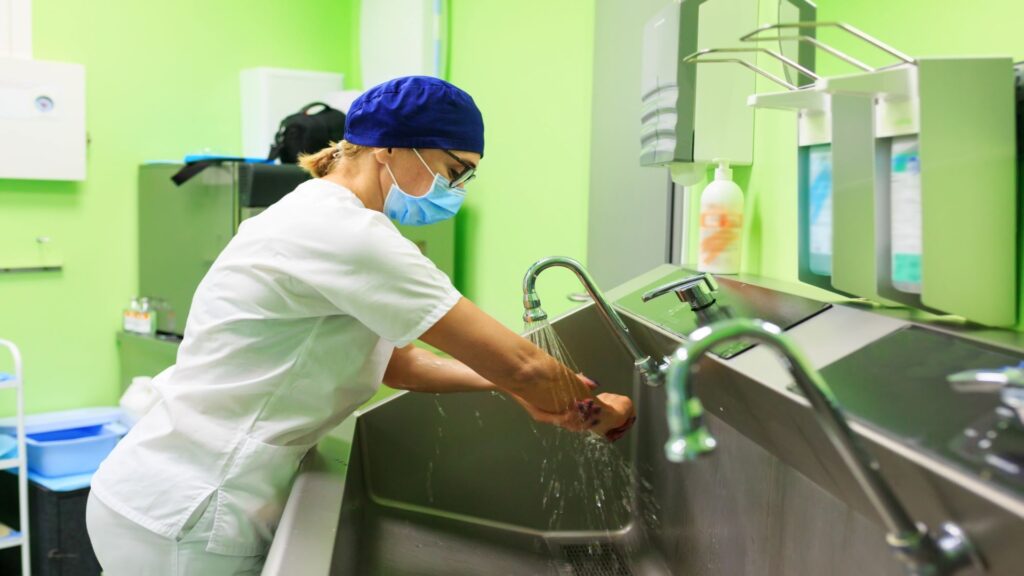Hospitals should be places of healing, but sadly, they can also be breeding grounds for dangerous infections. Hospital-acquired infections (HAIs) are a serious threat to patient safety, causing longer hospital stays, increased healthcare costs, and even death. The vulnerability of patients, the constant presence of pathogens, and the potential for human error by overburdened staff create unique challenges in infection control. However, hospitals can make significant strides in preventing the spread of infections.
Hospitals need robust infection control strategies to protect their patients. It’s essential to prioritize prevention measures and create a culture of safety. This article will provide practical guidance on key areas where hospitals can maximize infection control for improved patient outcomes.
1. Hand Hygiene: The First Line Of Defence
You don’t need sophisticated equipment for infection control – the most important tool is right at your fingertips. Good hand hygiene is the single most effective way to prevent infections. The World Health Organization (WHO) outlines “5 Moments for Hand Hygiene” to guide healthcare workers on when to clean their hands. These include before and after touching a patient, before clean procedures, after bodily fluid exposure risk, and after touching a patient’s surroundings.
Despite its importance, hand hygiene compliance remains a challenge in many hospitals. Barriers include lack of available handwashing facilities or alcohol-based rubs, staff shortages that lead to feeling rushed, and skin irritation from frequent hand hygiene. To improve adherence, it’s essential to provide the necessary resources. Systems for monitoring hand hygiene performance and providing feedback to staff have proven effective. Some facilities have also seen success with incentive programs to promote healthy hand hygiene practices.
2. Environmental Cleaning And Disinfection: A Constant Battle
Hospital environments can become contaminated with harmful microbes. High-touch surfaces like bed rails, door handles, and medical equipment pose a particular risk. Thorough cleaning and disinfection are critical to reducing the risk of infections spreading. Hospitals must follow best practices for cleaning patient care areas and equipment.
Selecting the right disinfectant is essential for effective cleaning. Consider the types of pathogens you might encounter and choose disinfectants approved by the Environmental Protection Agency (EPA). It’s important to follow the manufacturer’s instructions for proper use of disinfectants, including dilution, contact time, and safe handling.
Standardized cleaning and disinfection protocols leave less room for error. Staff need training on these protocols, and regular audits can help ensure procedures are followed consistently. Hospitals must also ensure staff have sufficient time and resources to perform thorough cleaning and disinfection tasks.
3. Early Detection And Isolation: Stopping Outbreaks
Identifying infectious patients quickly is key to preventing outbreaks. Hospitals must have systems in place to screen patients for contagious illnesses upon admission and throughout their stay. If a patient is suspected of having an infectious disease, they should be placed in isolation to separate them from other patients and staff. This might involve using patient isolation shelters or designated isolation rooms within the facility.
Standard isolation precautions include three levels: contact, droplet, and airborne. Contact precautions are used for infections spread via direct contact or contaminated surfaces. Droplet precautions prevent the spread of infections transmitted by respiratory droplets. Airborne precautions prevent the spread of pathogens that can linger in the air.
Rapid diagnostic tests help clinicians quickly identify the cause of a patient’s illness. This allows hospitals to implement appropriate isolation precautions and begin targeted treatment sooner. Early intervention can significantly reduce the risk of an infectious disease spreading to other patients and staff.
4. Judicious Antibiotic Use: Combating Resistance
Antibiotics are powerful tools in modern medicine, but their overuse poses a serious threat. Antibiotics can lead to the rise of resistant bacteria, also known as “superbugs.” These superbugs can render treatments ineffective, making infections much harder to cure.
Hospitals can combat antibiotic resistance by implementing antibiotic stewardship programs. These programs aim to optimize antibiotic use, ensuring patients get the right antibiotic, at the right dose, for the right duration. Antibiotic stewardship programs typically involve several strategies.
Hospitals may restrict the use of certain broad-spectrum antibiotics or require prior approval for their use. Educating prescribers about optimal antibiotic use is also essential. Collaboration between prescribers and pharmacists can help ensure appropriate choices by clinicians. Pharmacists can help review medication orders and recommend alternatives when necessary.
5. Empowering Healthcare Workers: Leaders In Infection Control
Healthcare workers are the backbone of infection control efforts. Hospitals must provide ongoing education and training on infection prevention practices. Staff need the most current information about preventing specific infections, isolation precautions, hand hygiene, and the use of personal protective equipment (PPE).
Creating a culture of safety is crucial in infection control. Staff must feel comfortable reporting potential breaches in protocol or concerns about infection risks. A blame-free environment encourages open communication, which is vital for identifying and addressing issues promptly.
It’s also essential to have strong leadership support for infection control initiatives. Leaders set the tone by prioritizing safety and allocating necessary resources. Consistent reinforcement of infection control protocols through leadership messaging, role modeling, and staff recognition helps foster a culture where preventing infections is everyone’s responsibility.
Conclusion
In summary, maximizing infection control in hospitals requires a multifaceted approach. This includes rigorous hand hygiene, diligent environmental cleaning, swift isolation measures, wise antibiotic use, and empowered staff. Hospitals that prioritize infection control can create safer environments for patients and staff.
If you want to learn more about preventing infections in hospitals, consider looking for online reviews of infection control practices and policies at various healthcare facilities. You can also find helpful videos that demonstrate infection control techniques. If possible, it’s worth visiting with your local healthcare provider to discuss any questions or concerns you may have about their practices. Staying informed and advocating for strong infection control can help create a healthier future for all.




















